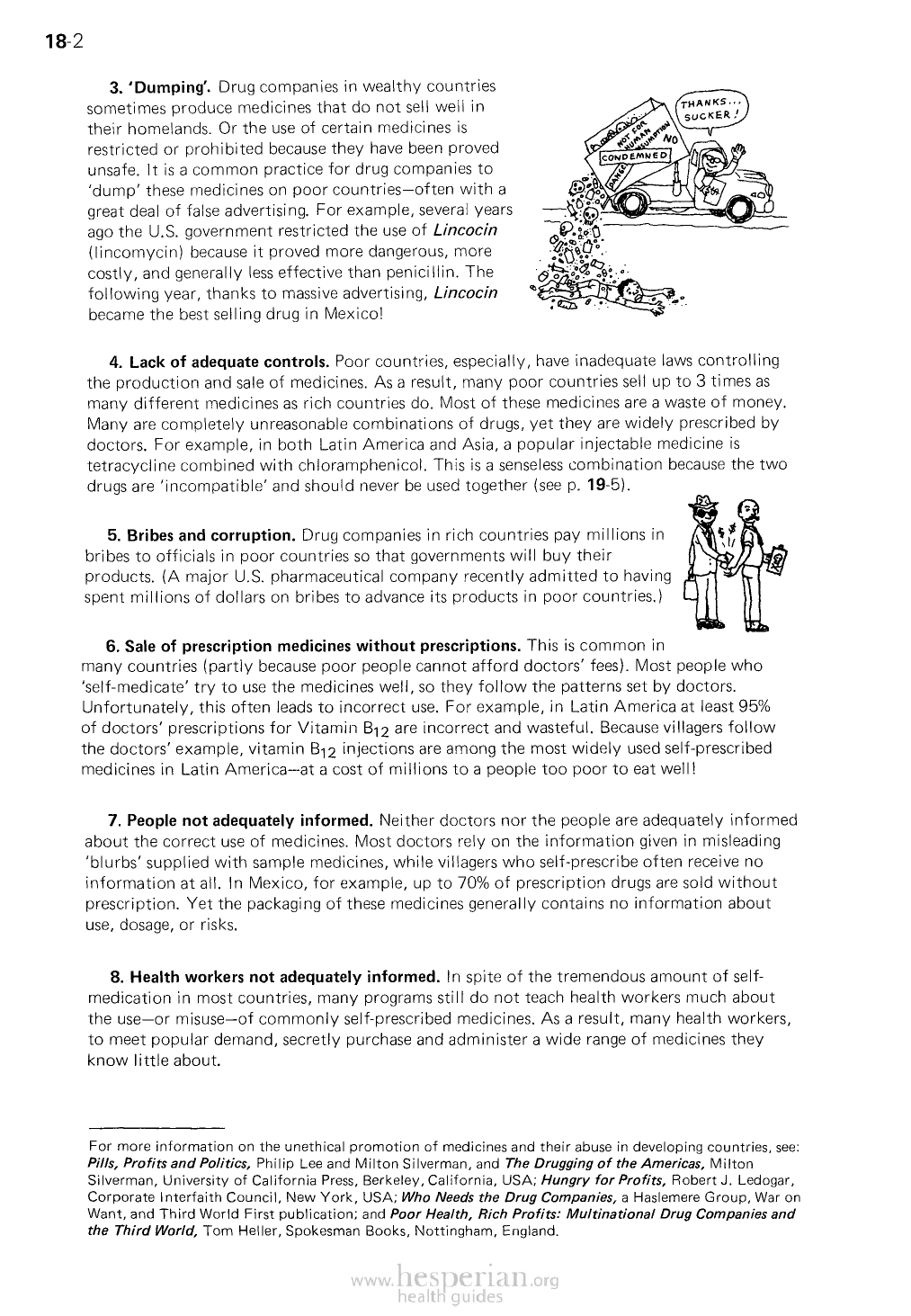
18-2
3. ‘Dumping’. Drug companies in wealthy countries
sometimes produce medicines that do not sell well in
their homelands. Or the use of certain medicines is
restricted or prohibited because they have been proved
unsafe. It is a common practice for drug companies to
‘dump’ these medicines on poor countries—often with a
great deal of false advertising. For example, several years
ago the U.S. government restricted the use of Lincocin
(lincomycin) because it proved more dangerous, more
costly, and generally less effective than penicillin. The
following year, thanks to massive advertising, Lincocin
became the best selling drug in Mexico!
4. Lack of adequate controls. Poor countries, especially, have inadequate laws
controlling the production and sale of medicines. As a result, many poor countries sell up to 3
times as many different medicines as rich countries do. Most of these medicines are a waste
of money. Many are completely unreasonable combinations of drugs, yet they are widely
prescribed by doctors. For example, in both Latin America and Asia, a popular injectable
medicine is tetracycline combined with chloramphenicol. This is a senseless combination
because the two drugs are ‘incompatible’ and should never be used together (see p. 19-5).
5. Bribes and corruption. Drug companies in rich countries pay millions in
bribes to officials in poor countries so that governments will buy their products.
(A major U.S. pharmaceutical company recently admitted to having spent
millions of dollars on bribes to advance its products in poor countries.)
6. Sale of prescription medicines without prescriptions. This is
common in many countries (partly because poor people cannot afford doctors’ fees). Most
people who ‘self-medicate’ try to use the medicines well, so they follow the patterns set by
doctors. Unfortunately, this often leads to incorrect use. For example, in Latin America at least
95% of doctors’ prescriptions for Vitamin B12 are incorrect and wasteful. Because villagers
follow the doctors’ example, vitamin B12 injections are among the most widely used self-
prescribed medicines in Latin America—at a cost of millions to a people too poor to eat well!
7. People not adequately informed. Neither doctors nor the people are adequately
informed about the correct use of medicines. Most doctors rely on the information given in
misleading ‘blurbs’ supplied with sample medicines, while villagers who self-prescribe often
receive no information at all. In Mexico, for example, up to 70% of prescription drugs are sold
without prescription. Yet the packaging of these medicines generally contains no information
about use, dosage, or risks.
8. Health workers not adequately informed. In spite of the tremendous amount of
self-medication in most countries, many programs still do not teach health workers much
about the use-or misuse-of commonly self-prescribed medicines. As a result, many health
workers, to meet popular demand, secretly purchase and administer a wide range of
medicines they know little about.
For more information on the unethical promotion of medicines and their abuse in developing countries, see-” Pills,
Profits and Politics, Philip Lee and Milton Silverman, and The Drugging of the Americas, Milton Silverman.
University of California Press, Berkeley, California, USA; Hungry for Profits, Robert J. Ledogar, Corporate Interfaith
Council. New York, USA, Who Needs the Drug Companies, a Haslemere Group. War on Want, and Third World
First publication; and Poor Health, Rich Profits: Multinational Drug Companies and the Third World, Tom Heller,
Spokesman Books. Nottingham. England.